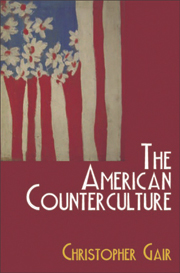3 - Painting
from Part One - 1945–1960
Published online by Cambridge University Press: 05 August 2013
Summary
A painting is not a picture of an experience, it is an experience.
Mark Rothko (1959)This is not painting! Only in America could it happen.
Constantine NivolaThe canonisation of Jackson Pollock as the tortured genius of post-war American art has tended to reinvent him as a soul brother to other iconic countercultural figures such as Jack Kerouac, Charlie Parker, Lenny Bruce and James Dean. In this narrative, Pollock exemplifies the alienated artist struggling to produce original work within a culture of consumption defined by its obsession with mass-produced objects. Pollock's painterly techniques – especially the dripping that led to Time magazine dubbing him ‘Jack the Dripper’ – have encouraged many critics to draw comparisons across genres; with bop improvisation, with the spontaneous prose associated with Kerouac and other Beats, and with Bruce's stream-of-consciousness stand-up comedy. Pollock's death in an automobile accident in 1956 has done nothing to dispel such mythologising, further linking him with Dean and with Parker, who had both died the previous year.
There is much to be said in defence of this account: alongside the social ties between writers, artists, musicians and painters that were developed in places such as Greenwich Village's Cedar Tavern and Waldorf Cafeteria, there are indubitably compositional, ideological and formal links. David Anfam has suggested that Kerouac's spontaneous prose was developed, in part, as a result of Pollock's work, and has pointed out that in the late 1940s, when Pollock had largely abandoned the use of an easel and was drip painting onto large canvases stretched out on the floor, it was ‘commonplace in New York artistic circles … to assume that direct gesturing was more powerful than verbal expression’.
- Type
- Chapter
- Information
- The American Counterculture , pp. 77 - 96Publisher: Edinburgh University PressPrint publication year: 2007



